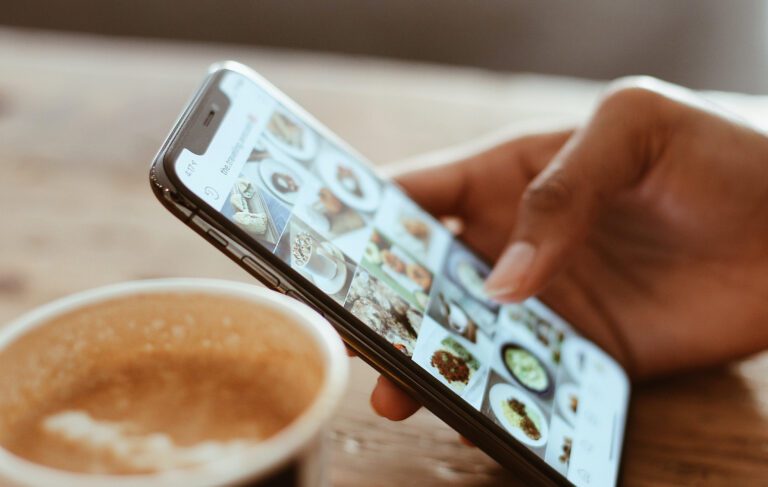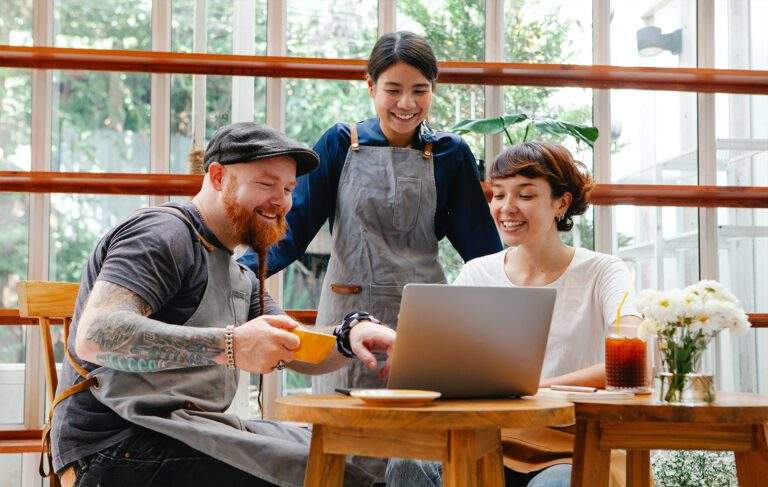What is social media engagement?
Social media engagement is used to describe the number of interactions that social media posts receive.
One of the main ways to measure social media marketing. Data from this allows seeing how content is being received, interacted with, and helps attract new followers,
This data is the measurement of audience responses to the content that you post. This could be in the form of likes, comments, and shares. Or it could be more active through click-throughs and/or branded hashtags.
It’s worth noting that although follower count is important, it is not a true reflection of an engaged audience.
It’s like inviting your follower base to a party and there was zero engagement. No one spoke and no one danced. An unengaged audience means an unsuccessful party.
Why is it important?
It is risky to aimlessly throw content out there on social media without monitoring how well your followers are receiving it.
It should be more than promoting your brand. Your social media should be your chance to be authentic and position your brand on a more personal level with your customers.
In short, social media is not the place to big up your brand or make sales. It’s for interaction with your audience.
For example, Starbucks is killing the social media game with over 35 million followers on Facebook and 18 million on Instagram. Instead of filling their pages with coffee promotions, they fill their content with a customer focus in mind. By frequently interacting with their followers, they become more authentic and more than just a brand. They also use interactive hashtag campaigns such as #WhatsYourName to promote diversity within the transgender community, allowing customers to share their transition stories.
Tips to boost engagement
1. Create and post user-generated content
First let’s define what user-generated content (USG) is.
USG is original content that’s created by customers to promote a brand. Essentially, it’s a way of your customers organically promoting your brand, whether it be through testimonials, reviews, photos, videos, posts, even entire campaigns.
One of the most memorable examples of this was the #ShareaCoke campaign. 150 common male and female names were printed on coke bottles, encouraging the public to share a coke with their loved ones. People were buying the personalised bottles and sharing photos of them all over social media.
When people search the term “shareacoke”, it’s a guarantee that Coca Cola’s brand will come up. It’s a chance for Coke to showcase their products.
It helps influence engagement and and increase conversions.
Why use this?
- Nearly two-thirds of shoppers (63 percent) believe UGC creates a more authentic shopping experience.
- Nearly three-quarters (73 percent) say UGC increases their purchasing confidence.
- Nearly two-thirds (61 percent) report UGC encourages them to engage with brands.
The benefits surround USG are extensive so rather than put it here, we’ve compiled a separate article. To discover the benefits of using USG, check out this article:
https://statusbrew.com/insights/user-generated-content/#what-is-user-generated-content
2. Post frequently
This is one is hopefully quite straight forward. The more you post, the more likely your content will be seen by your audience.
So, how frequent is frequent and is there such a thing as too frequent?
For Instagram posts, you should be looking to post 3-7 times a week. 2-3 posts a week as a bare minimum but ideally, one post a day.
That being said, there is such a thing as too frequent. It’s recommended not to post more than once a day.
In terms of Instagram stories, 2 stories a day is ideal for building a following.
For Facebook, posts are recommended not to exceed 2 posts a day.
As for Twitter and LinkedIn, 1-2 posts a day is advised and no more than 5 times a day.
Now, creating and posting everyday can cause accidental errors and mistakes. Ideally, it’s better to carve out a day to create and schedule posts. The best way to organise your content is to create a social media content calendar. That way, you can schedule posts for a whole month and not have to worry about actively posting every day.
If you’re the organised type, you can create a timetable within Excel or Google Sheets. Or if you’re more into the help of apps: HubSpot is a free option amongst many other paid ones. Tools like HootSuite and Buffer provide free templates and also offer paid plans.
To sum up, the most posts equals more followers and more engagement. But remember, there is such a thing as over-posting to make sure to schedule your posts on a timely basis and don’t go overboard or it can have a backwards effect. Quality over quantity.
3. Live videos
Live videos are undoubtedly rising in the social media world.
People spend 3x more time watching Facebook Live videos compared to non-live videos. And it shows: YouTube, Instagram and Snapchat have all followed this live streaming trend.
Videos, alone, are an attention-grabbing and interactive way to increase engagement with customers. They’re more appealing and info is easier to grasp. For example, consumers are 39% more likely to share content if it’s delivered through video.
But live streaming can have a bigger impact on the viewers and create excitement like no other. The reach is much bigger, as there’s no restrictions, and it gives you a chance to tell your brand story in a innovative way.
And they don’t have to be used just for conversions… 48% of consumers have shared a brand video on their social media profile.
“80% of people would rather watch live video from a brand than read a blog, and 82% prefer live video from a brand to social posts.”
Bonus tip – advertise before going live. This gives your audience time to expect, build anticipation and already gives you an audience before you start.
4. Design high quality visuals promoting brand image
Visual content is exactly the same as first impressions – it matters!
It’ll need to catch your audience’s attention and get them to engage with the post. Even if it is a text based post – the visuals are what attract the attention. Facebook and Linkedin posts are more likely to be engaged with if they have a visual attached to it.
You’ll also want to create visual content with your brand in mind. Think of the colour palette and aesthetic and how it will align with your brand image. The key is to make sure it’s consistent; random colours won’t make a theme (unless that is your theme). Over time, your audience will associate your colours and themes with your brand.
A great example of how this is done is on @punch_drink Instagram. The general theme is cocktail drinks against a neutral or nature-based background.The vibrant cocktail colours are complimented by the neutral background tones.
Each photo seems professionally taken and presented each in their own creative way. On top of that, their captions contain the recipes and even history of each cocktail so the customers get exactly what they need through the image content.
5. Engage with your audience
Social media is a two-way street.
If you enter the social media gig with a selfish mindset, it will only backfire. You can’t expect to be engaged with if you don’t engage back. Instead, go in with a mindset of building relationships instead of followers.
For example, if people take the time to leave comments on your posts, make sure to reply to them individually. It reflects a personal side to your business, it shows there’s a person on the other side of the screen instead of a faceless business. Make sure to mention their @name or first name to make it more direct.
It will encourage them to leave comments in the future and continuously enagage with your company.
So although your time on social media will be spent on creating and posting, the other half should be spent connecting with like-minded people, this will create a more authentic follower base and, better yet, a community.
Bonus tip – check our competitor social media pages and see what they’re doing right. You’ll see the type of audience they’re appealing to and it might help you start the foundation for yours.





